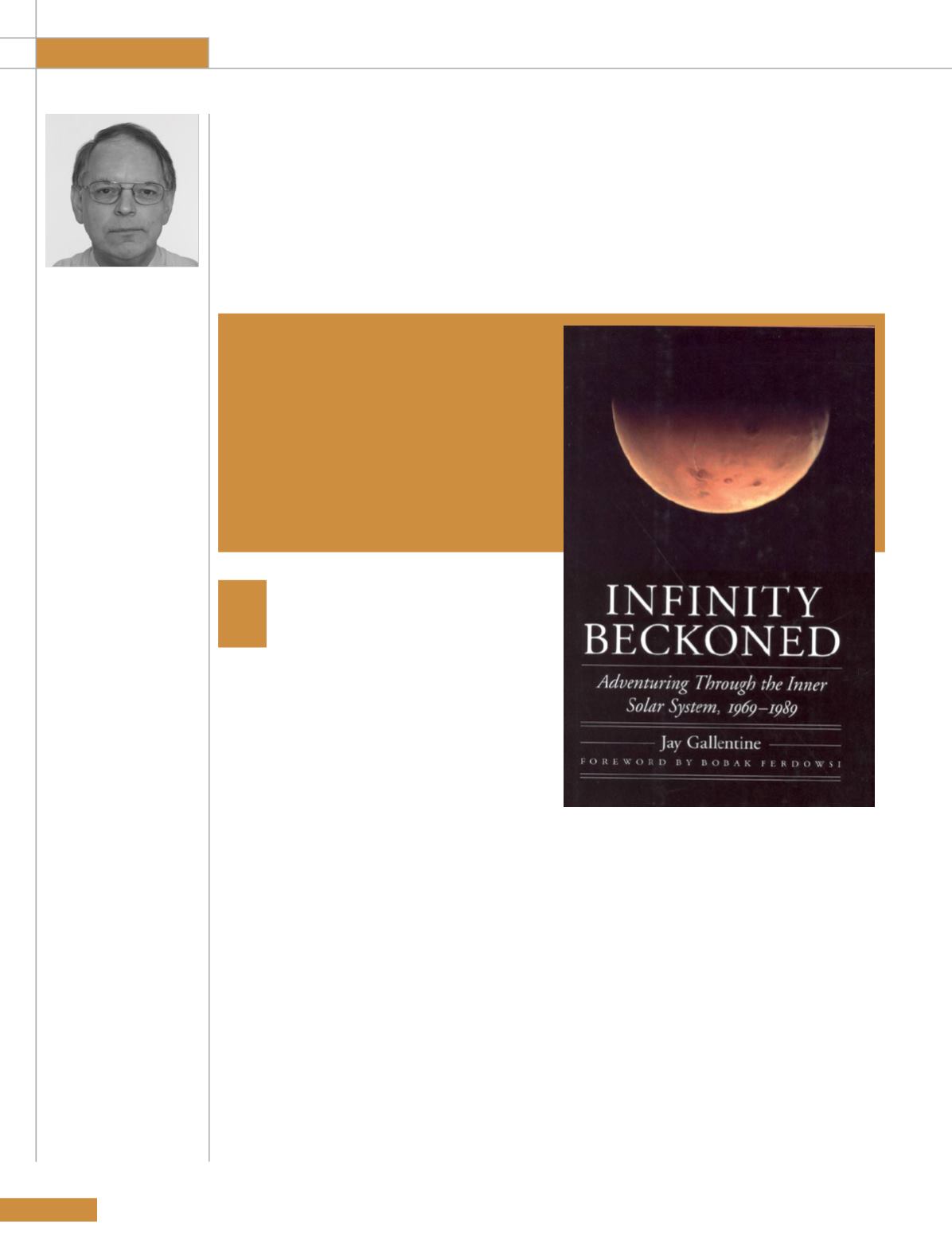
ROOM
110
Book Reviews
Mark Williamson
Space Technology
Consultant
Book reviews
ROOM
reviews books of interest to the space professional. Our policy is one
of impartiality and honesty, so if a book has failings we believe should be
brought to the attention of potential purchasers, we will do so. On the other
hand, if it is useful, informative and entertaining, we will say so. In this way,
we hope to provide a useful service to our readers.
S
ince the beginning of the Space Age,
space history books have gone through a
sort of evolution: the early ones
described the technology and the
missions; later, more professional texts analysed
political motives in a Cold War context; and then,
in search of a different angle, authors began to
concentrate on the personalities. This book is
very much in the latter category; that’s not to
imply that it ignores the technology and the
politics, but people are clearly identified as the
driving characters in this story.
In what the fly-leaf describes as an ‘irreverent
and engaging style’, the author tells the story of
some of the Russian and American space science
missions of the 1970s and 1980s through the eyes
of those responsible. The book is based on dozens
of interviews and other personal communications
and, though somewhat sparsely illustrated with
black-and-white photos, has a useful index.
The writing style is one in which American
authors, in particular, seem to excel. Each
chapter begins with a quote or statement that
seeks to grab the audience, much as a fiction
author might do. Such as: ‘“Get Frank Borman
on the phone!” barked Chris Krafft. He didn’t
have time for this – another bothersome issue
on his lengthy list. The order vortexed his
secretary into a scramble.’
Whether or not you like this style will depend
on how you take your history: strictly academic
and scrupulously referenced or, like this, widely
accessible and broadly entertaining.
In my opinion, there is room for both. This
book will probably appeal to those who think they
will find history boring, though it has to be said
that the somewhat academic presentation of the
volume militates against them opening it in the
first place. To be clear, they should read it, because
it’s far from boring!
It might also appeal to those who have a fair
grasp of the historical facts, as it will place those
facts in a different perspective. Ultimately, with
books written in this style, it requires the reader to
trust the author to portray the true facts and not
get carried away with the ‘novelisation’. If pressed,
I’d say it goes a little too far in the latter direction…
but space history virgins are unlikely to agree.
Infinity Beckoned: Adventuring
Through the Inner Solar
System, 1969-1989
Jay Gallentine
University of Nebraska Press, 2016, 474pp,
hardback
£28.50,
ISBN 978-0-8032-3446-8


